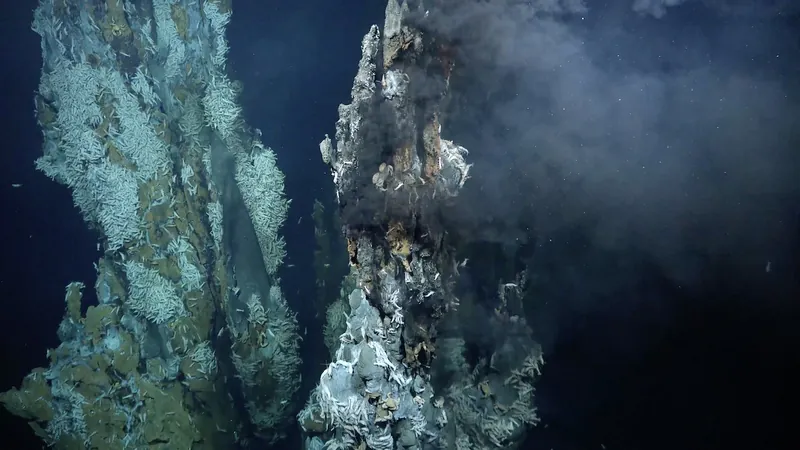
Extraordinary Microbes: How Life Thrives in Extreme Conditions and Its Groundbreaking Biotechnological Potential
2025-03-21
Author: Yu
Microorganisms, the tiniest forms of life, are not just abundant; they are incredibly resilient. Surprisingly, these tiny warriors of the living world have been discovered in some of the most extreme environments on Earth, where it was once believed that life could not survive. Meet the incredible "extremophiles"—organisms that not only endure but thrive in conditions of extreme temperatures, pressures, salinities, acidity, and radiation.
The adaptation of these extremophiles is nothing short of miraculous. Over millions of years, they have developed unique metabolic pathways and biochemical characteristics, allowing them to not only survive but flourish under conditions that would be lethal to most other forms of life. This exceptional ability has ignited significant interest in their potential applications across various fields, including biotechnology, medicine, and environmental science.
To understand their diverse adaptations, extremophiles are classified into distinct categories based on the extreme conditions they inhabit. **Thermophiles**, for instance, are heat-loving microbes that flourish in scorching environments such as hydrothermal vents and hot springs. On the opposite end of the spectrum, **psychrophiles** thrive in frigid conditions, often found in polar ice caps and the depths of the ocean.
Additionally, we have **acidophiles**, which are adept at living in highly acidic environments, and **alkaliphiles**, which prefer basic, alkaline conditions. The resilience of **halophiles** in saline environments, such as salt flats and salt lakes, further showcases nature's ingenuity. Then there are the **barophiles**, or piezophiles, which exist under immense pressures in deep-sea habitats, and **radiophiles**, organisms that can withstand intense levels of radiation.
The implications of studying these remarkable microbes extend beyond mere academic interest. For instance, the unique enzymes found in extremophiles, known as extremozymes, are already being harnessed in various biotechnological applications, from industrial processes to pharmaceuticals. Their robustness allows them to function under harsh conditions, making them ideal candidates for numerous chemical reactions that conventional enzymes cannot withstand.
In light of these findings, researchers are increasingly optimistic about the role extremophiles might play in future ecological and medical advancements. Their study not only enhances our understanding of life on Earth but could also provide critical insights into life beyond our planet, making them central figures in the search for extraterrestrial life.
The exploration of these extreme microorganisms is just beginning, and their secrets may hold the key to revolutionary breakthroughs in several scientific domains. Get ready to stay tuned as we continue to uncover the mysteries of life that thrives at the very limits of possibility!



 Brasil (PT)
Brasil (PT)
 Canada (EN)
Canada (EN)
 Chile (ES)
Chile (ES)
 Česko (CS)
Česko (CS)
 대한민국 (KO)
대한민국 (KO)
 España (ES)
España (ES)
 France (FR)
France (FR)
 Hong Kong (EN)
Hong Kong (EN)
 Italia (IT)
Italia (IT)
 日本 (JA)
日本 (JA)
 Magyarország (HU)
Magyarország (HU)
 Norge (NO)
Norge (NO)
 Polska (PL)
Polska (PL)
 Schweiz (DE)
Schweiz (DE)
 Singapore (EN)
Singapore (EN)
 Sverige (SV)
Sverige (SV)
 Suomi (FI)
Suomi (FI)
 Türkiye (TR)
Türkiye (TR)
 الإمارات العربية المتحدة (AR)
الإمارات العربية المتحدة (AR)